Learning the Project Processes
|
| < Day Day Up > |
|
All projects, from technology to architecture, are composed of processes. Recall that phases are unique to each project and that the goal of the phase is to conclude with a specific, desired result. The completion of phases is the end of the project, culminating in the creation of a unique product or service. Processes are a series of actions with a common, parent goal, to create a result. Processes within project management monitor and move the phases along.
| On the Job | In your organization, you may treat equipment as a true resource. For example, manufacturing equipment, printing equipment, or even transactions may be treated as resources whose time is billable to project customers. |
People perform processes. It may be tempting to say that a piece of equipment, such as a manufacturing device, a computer, or a bulldozer, completes the process, but it is, technically for your exam, a person or group of people that complete the process. Think of the processes within a project you've worked on. Know that the processes are not the individual activities, but the control of individual activities to complete a project phase.
There are two types of processes:
-
Product-orientated processes These processes are the activities that complete a project's phase and life cycle. Recall that the project's life cycle is comprised of the completion of the phases. In other words, the product-orientated processes within a project complete phases, which in turn complete the project. The processes within a project are unique to each project. The concept of project life cycles was discussed thoroughly in Chapter 2.
-
Project management processes These processes are the activities that are universal to all projects. These activities comprise the bulk of the project management body of knowledge and will be discussed in detail in Chapters 4 through 12. These processes are common to all projects from construction to technology.
The two process types are interrelated and interdependent. Thus, a project manager must be familiar with the product-orientated processes in order to apply the project management processes. To use a real-world example, a project manager should be familiar with both how a house is constructed and the various phases involved in that construction in order to effectively apply the project management process.
Exam Watch
Project management processes are the processes you'll want to study. Product-orientated processes, on the other hand, are unique to the organization creating the product.
Identifying the Project Management Process Groups
The following are the five project management process groups and what occurs under each:
-
Initiating The project is authorized.
-
Planning Project objectives are determined, as well as how to reach those objectives with the given constraints.
-
Executing The project is executed utilizing acquired resources.
-
Controlling Project performance is monitored and measured to ensure the project plan is being implemented to design specifications and requirements.
-
Closing The project and its various phases are brought to a formal end.
Exam Watch
The five process groups can be remembered as IPECC. Some think of syrup of ipecac to recall the processes. Hopefully, IPECC won't give you the same bitter aftertaste.
These process groups are not solo activities. The groups are a collection of activities that contribute to the control and implementation of the project management life cycle. The output of one process group will act as input for another process group. For example, one of the outputs of the initiating process is the project charter. The charter is thus input for the planning processes, being that it authorizes and sanctions the project, the project manager, and the resources required to complete the project work. While there is a logical succession and order to the flow of the processes, process groups will overlap other groups (as shown in Figure 3-1).
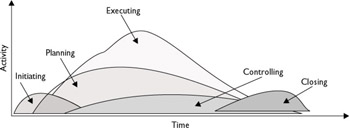
Figure 3-1: Process groups overlap other groups.
Not only will process groups overlap, but some process groups may be repeated based on the activities within the project. Specifically, planning, controlling, and executing processes are revisited throughout the project.
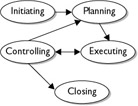
For example, within a project designed to create a new piece of software, there will be logical project phases: design, build, test, implement, and so on. Within each of the phases, project processes can also exist. Each phase of the project has project processes unique to the logical activities within that phase. The closing process of a project phase can serve as input for the next phase within the project.
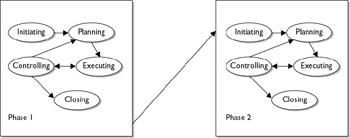
Identifying the Initiating Processes
This process launches the project process and allows the project manager to have the authority to begin the project. Project initiation, while simple on the surface, admits that there is some problem that a solution should solve. As a solution is considered, a level of authority is transferred from senior management to the project manager to lead the organization to the desired future state.
Identifying Needs
A project is generally called upon to provide a solution to a problem or to take advantage of an opportunity. The needs of the current state are then answered by the deliverables of the proposed project. These needs might have to do with:
-
Reducing costs
-
Increasing revenues
-
Eliminating waste
-
Increasing productivity and efficiency
-
Solving a business or functional problem
-
Taking advantage of market opportunities
This is just a short list. There are countless other needs that can be addressed through project plans.
| On the Job | Business reasons for why a project is created depend on your business objectives. If you're pitching a project to management, address the most prevalent business needs first. So first, from a business perspective, answer the following question: 'Why is this important to my organization?' |
Creating a Feasibility Study
A feasibility study is conducted to prove a problem actually exists, document the opportunities at hand, and then determine if a project can be created to resolve the problem or take advantage of the opportunity cited. A feasibility study may also look at the cost of the solution in relation to the possible rewards gained by its implementation.
Identifying the Business Needs
The business needs will examine the problem, opportunity, and solution to see how the potential project and its expected outcome fits within the realm of the business vision and goals. Recall the organizational pyramid in the following illustration? The business level of an organization asks, 'Why is this important?' The focus of the business level is vision and strategy, so the results of the project must support that level.
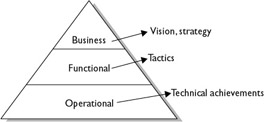
Creating a Product Description
The initial product description will describe what the expected outcome of the project is to be. This may be a service, a product, or even a description of the desired future state. The initial product description does not have to be an exact specification document of what the project will create, though in some instances it may. Typically, the product description describes the solution or realized opportunity that the project will accomplish.
Creating a Project Charter
The project charter authorizes the project, officially naming the project manager and authorizing the project work. Such documents come from Senior Management and allow the project manager to begin the project work with the support, permission, and trust of management.
Exam Watch
Project charters authorize. When you think of the project charter, think authority for the project manager.
Selecting the Project Manager
The project manager is officially named in the project charter, but the involvement of the project manager in the project will likely come early on in this process group. The project manager will need to know the expectations of his role in the type of organizational structure he is participating in (functional, matrix, projectized, or composite). The organizational structure recognition is important since it will determine the level of authority and power that the project manager can expect within a project.
Identifying the Planning Processes
The planning processes are iterative in nature; a project manager does not complete the planning processes and then move on to other activities within the project, never to return. Throughout the project the project manager, and the project team, will be returning to the planning processes as often as needed.
In particularly large projects, the project manager should include the stakeholders to obtain buy-in of the project deliverables. Including the project stakeholders not only accomplishes buy-in, but provides shared ownership of the project. This is important because shared ownership allows the customer to recognize the value and intensity of the project work and process. In addition, the project manager should include stakeholders to ensure the project deliverables are in alignment with what the stakeholders and the project team are expecting to receive.
Within large or highly technical projects, planning can also be known as rolling wave planning. Rolling wave planning focuses detailed planning on the immediate activities of the project, rather than on remote, future activities that may be affected by the outcome of the direct project results. The issues further downstream are addressed in rolling wave planning, but in high-level detail, rather than the specifics the pressing focus is on. This is an example of progressive elaboration.
Exam Watch
Rolling wave planning is an acceptable planning solution for long projects whose late activities in the project schedule are unknown or will be determined based on the results of early project phases.
Creating a Scope Statement
The scope statement is a document that describes the work, and only the required work, necessary to meet the project objectives. The scope statement establishes a common vision among the project stakeholders to establish the point and purpose of the project work. It is used as a baseline against which all future project decisions are made to determine if proposed changes or work results are aligned with expectations. The scope statement may, with adequate reason, be updated to reflect changes in the project work.
Recruiting the Project Team
The project team completes the project work. The project manager relies on the project team to do several tasks, including:
-
Complete the project work
-
Provide information on the work needed to complete the project scope
-
Provide accuracy in project estimating
-
Report on project progress
The project manager must use human resource and leadership skills to guide and lead the project team to project completion. In some organizations, the project team may be assigned to the project, while in other organizations the project manager may have the luxury of handpicking the project team members.
Creating the Work Breakdown Structure
The work breakdown structure (WBS) is an organized collection of the project-deliverable components to be created by project work. The project manager cannot complete this activity alone. The input and guidance of the project team is required as they are the individuals closest to the work and will be completing the actual activities within the project phases. The WBS will offer major input into planning, estimating, and scheduling processes throughout the project.
Completing the Initial Risk Assessment
Risk can be both good and bad. Generally, risk is a perceived threat (or opportunity) to the completion of the project. The initial risk assessment allows the project manager and the project team to determine what high-level risks may influence the feasibility, resources, and requirements to complete the project. The initial risk assessment may also steer the project toward a different solution.
Creating the Network Diagram
The network diagram, also called the Project Network Diagram (PND), illustrates the flow of activities to complete the project and/or the project phase. It identifies the sequencing of activities identified within the WBS and determines which activities may be scheduled sequentially versus in tandem.
Completing Estimates
Time and cost estimates are completed within the planning process. Time estimates reflect the amount of time to complete each activity within the WBS. Once the estimates are mapped to the PND, an accurate estimate of how long the project will take to complete may be created.
Cost estimates can be calculated a number of different ways, such as through top-down estimates, bottom-up estimates, or the dreaded informal 'hallway estimates.' All estimates should identify a range of variance reflective of the degree of confidence of the estimate, the assumption the estimate is based on, and how long the estimate is valid.
Discovering the Critical Path
The critical path is the chain of activities within the PND that cannot be delayed without delaying the project end date. There can be more than one critical path and it is possible for the critical path to change. The other paths within the PND have float or slack. Float or slack means these paths may be delayed, to a point, without delaying the end result of the project. Figure 3-2 shows a typical PND with the critical path in bold.
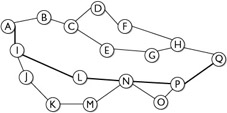
Figure 3-2: Network diagrams illustrate the sequence of events.
Creating the Project Schedule
The project schedule is dependent on the creation of the WBS, the PND, and the availability of the resources. Based on when the resources, the project team, and other required resources, such as equipment and facilities, are available the schedule can be determined. In many instances, the project must be scheduled from a time constraint. With a constraint of a deadline enforced on the project, all activities must be scheduled, from the project's start to its completion, to ensure the project can finish on time.
Completing the Project Budget
The project budget is the cost of the project, cash flow projections, and how the monies will be spent. The project budget should cover the cost of the team's time, facilities, and all foreseeable expenses. Cash flow projections are needed to alert management as to when monies must be available for the project to continue. Figure 3-3 demonstrates a project with expected cash flow expenses.
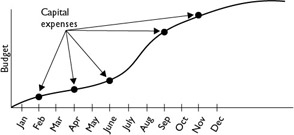
Figure 3-3: Cash flow projections allow an organization to plan for expenses.
Completing Risk Assessment
Risk assessment is an in-depth analysis of the project risks through qualitative and quantitative analysis. Qualitative risk analysis calls for a probability and impact matrix. Risks are typically categorized as high, medium, and low. Quantitative risk analysis is a more in-depth study of the identified risks. This technique calls for a risk matrix based on probability and impact. Quantitative analysis also uses simulations and decision tree models.
Completing Risk Response Planning
The risks are analyzed for both positive and negative impacts, entered through a risk matrix and then planned accordingly. Risks may be accepted, avoided, mitigated, countered, or planned for through contingency. Risks are also assigned to risk owners who will monitor thresholds and triggers.
Creating a Quality Management Plan
The quality management plan details how the project will map to the organizational quality policy; for example, ISO 9000 or Six Sigma specifics. The plan will provide specifics on how the project team will meet the quality expectations of the organizational quality assurance program. The quality management plan also sets the guidelines for how the project will adhere to quality control mechanisms and ongoing quality improvement. The following illustration demonstrates how QC fits within QA.

Completing Stakeholder Analysis
As part of planning, the stakeholders' expectations and requirements must be analyzed. The stakeholders' expectations must be documented, prioritized, and balanced between competing objectives. Managing stakeholders' expectations is crucial to project success, so having a complete understanding of their expectations is mandatory.
| On the Job | Stakeholder analysis allows the project manager and the project team to determine the expectations of the customer. If the customer doesn't know what their expectations are, the project manager cannot decide for them. The project manager and the customer must be in agreement with what the project should create before the creation begins. |
Creating a Change Control Plan
Based on the scope statement, the project scope should not change-unless it is absolutely necessary. The project manager and the project team should create a change control plan that will specify how the project scope may be changed, what the procedure to change the scope is, and what the requirements are to make a change. On large or high-profile projects, the project manager may be working with a Change Control Board (CCB) to determine if changes should be approved and factored into a project scope.
Creating an Organizational Plan
The organizational plan determines who does what. Specifically, it documents the roles and responsibilities of the project stakeholders, including the project team, project sponsor, project manager, functional managers, and vendors. The organizational plan also defines the reporting structures within the organization. It is tightly integrated with the communications plan.
Creating a Communications Plan
The communications plan determines who needs what information, how they need it, and when it will be delivered. The plan specifies team meetings, reports, expectations for reports, and expectations of communication among team members. The communications plan must account for all needed communications within the project.
Consider a project manager of a high-profile project called Project XYZ. The project manager requires the project team members to report their progress on Project XYZ every Tuesday in the project status meeting. In addition to team members reporting their status, they will also need to update their work electronically through the Project Management Information System (PMIS). These communication requirements are defined in the communications management plan.
Exam Watch
It has been said that 90 percent of a project manager's time is spent communicating. Communicating equates to project management.
Completing the Project Plan
This formal document guides the project execution and control through the project phase(s). Senior Management must approve the plan prior to execution. The project plan's primary purpose is to communicate the assumptions, decisions, and risks to the involved stakeholders. In addition, the project plan documents the schedule, cost, and scope as baselines.
Officially Launching the Project
Planning is an iterative process. The result of planning is to allow the project work to begin. Once the project has reached a collective state of agreement between the project manager, management, the project team, and the customer, the project is officially allowed to begin.
Executing Processes
The executing processes allow the project work to perform. It is the execution of the project plan, the execution of the vendor management, and the management of the project implementation. The project manager works closely with the project team in this process to ensure that the work is being completed and that the work results are of quality. The project manager also works with vendors to ensure that their procured work is complete, of quality, and meets the obligations of the agreed contracts.
Authorizing the Project Work
A work authorization system is a method that allows work to begin according to schedule and circumstance. It provides for verification of predecessor activities and the permission to begin successor activities. The following illustration depicts the flow of work within a project's work authorization system.

What, in this chapter, must you focus on for your PMP Exam? Hmm… could it be processes? Processes are activities that are completed by people, not things. On the exam you won't need to know facts like which process is the most important, but rather which activity should the project manager complete next? Just substitute 'activity' for the appropriate process and you're on your way.
Product-orientated processes are unique to each project. Consider a construction project versus a technology project. Both projects have their own phases, but both also can share the project processes found within initiation, planning, execution, control, and closure. When you consider all of the different projects that happen in all of the different organizations, business types, and communities, you can imagine why the PMP exam will focus very little on product-orientated processes and more directly on project management processes.
Focus on the project management processes. Know the five process groups and how the processes among the groups are interrelated. Recall that the core processes follow a hard logic in their sequencing and that the facilitating processes are more flexible and supportive to the core processes.
It will behoove you to know, if not memorize, Table 3-8 (shown later in the chapter). This table covers all of the processes and how they map to the knowledge areas. If you want to pass your exam, and I know you do, know which processes happen in which knowledge area. Create some witty acrostic to memorize the knowledge areas and the processes within each process group.
Here are a few other key exam tips to take from this chapter:
-
Larger projects require more detail than smaller projects.
-
Projects fail at the beginning, not the end.
-
The processes may be customized to meet the demands or conditions of the project.
-
Planning is iterative.
-
Planning, executing, and controlling are tightly integrated.
Beginning Vendor Solicitation
In most projects, vendors are involved at some point. Part of the executing process is to solicit vendors should they need to be involved with the project. Adequate timing is required for the procurement process to allow the vendors to provide adequate, appropriate information for the project-and to allow the project manager to make an educated decision on which should be selected. Vendor solicitation includes obtaining quotations, bids, and proposals for the services or the goods to be purchased for the project completion.
Determining Vendor Source
This part of procurement involves making a decision as to which identified vendor will be the source of the service or good being procured. Source selection is based upon the selection criterion determined by the performing organization.
Administering Contracts
Procurement involves administering the contracts between the buyer and the seller. The contract must be fair and legal. The contract typically is a document that represents the offer and acceptance of both parties. Some organizations may utilize centralized contracting or a contracting office to manage all project contracts.
Mapping to Quality Assurance
As the project work continues, the project team and the project manager will need to verify that the project work results are mapping to the organization's quality assurance program as described in the quality management plan. Failure to adhere to the quality assurance program may result in rework, penalties, and project delays, as shown in the following illustration.
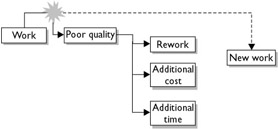
Dispersing Project Information
Information must be disseminated according to the communications plan. Stakeholders will need to be kept abreast of the project status. Management may want milestone reports, variance reports, and status reports. Customers will have specific communications requirements. All of these demands, from any stakeholder, should be documented within the communications plan-and then followed through in the execution process.
Ensuring Team Development
The project manager must work with the project team members to ensure that their level of proficiency is in agreement with their obligations on the project. This may involve classroom learning, shadowing between project team members, or on-the-job training. The success of the project work is dependent on the project team's ability. Should the team or team members be lagging in required knowledge to complete the project work, additional education and development is necessitated.
Controlling Processes
Controlling processes are the activities that ensure the project goes according to plan and the actions to implement when evidence proves the project is not going according to plan. Specifically, the controlling processes verify project work and the response to that work. In addition, the project manager must work to control the predicted cost and schedule of the project. Variances to the cost and schedule will affect the project's success.
Ensuring Quality Control
Quality control (QC) measures work results to determine if they are in alignment with quality standards. If the work results are not of quality, QC uses methods to determine why the results are inadequate and how to eliminate the causes of the quality deficiencies.
Providing Scope Verification
Scope verification is the process of verifying that the work results are within the expectations of the scope. It is typically done at project phase completion with the customer to formally accept the product of the project work. Should scope verification fail, the project scope must be compared against the work results. If the scope has not been met, the project may be halted, reworked, or delayed during a decision making process by the customer.
Implementing Scope Change Control
The project manager must follow the change management plan to ensure unneeded changes to the project scope do not occur. This includes scope creep that the project team may be completing on its own accord. For example, the project team members may be making additional adjustments to the equipment they are installing in a project, even through the project scope does not call for the additional adjustments. Scope change control ensures that the documented procedures to permit changes to scope are followed.
Leading Configuration Management
This process ensures the description of the project's product is precise, complete, and that it meets the demands of the stakeholder requirements. In addition, configuration management serves as a control agent for changes to the project deliverables. It monitors, guards, and documents changes to the scope. In some projects, configuration management may be the change control system. In other projects, it is part of the change control system.
Overseeing Change Control
The project manager must protect the project scope from unneeded change. Needed changes must be proven, documented, and analyzed for impacts on cost, schedule, and risks. The project manager must work within the confines of the change control plan and follow its guidelines regarding change requests, change approval or denials, and documentation. Overseeing change control may involve a Change Control Board that reviews, approves, or rejects the proposed changes for the project.
Managing Cost Control
Controlling the project's cost requires accurate estimates and then a check and balance against those estimates. Procurement management, cash flow, and fundamental accounting practices are required. Though cost control is dependent on project expenses, it also hinges on hidden and fluctuating expenses such as shipping, exchange rates for international projects, travel, and incidentals. Thus, accurate and thorough record keeping is imperative.
Enforcing Schedule Control
Schedule control requires constant monitoring of the project's progress, approval of phase deliverables, and task completion. Slippage must be analyzed early in the project to determine the root cause of the problem. Activities that slip may indicate inaccurate estimates, hidden work, or a poor WBS. Quality issues can also throw the project schedule when the time to redo project activities is taken into consideration, as shown in the following illustration. Finally, the project manager must also consider outside influences and their affect on the project-for example, weather, market conditions, cultural issues, and so on.
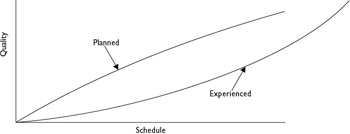
Monitoring Risk Response
Risk management requires risk ownership and monitoring by the project team members. As activities in the PND are completed, the project manager and the risk owners must pay special attention to the possible risks and the mitigation plans that may come into play. Risk responses, should they be acted on, may cause secondary risks, cost increases, and schedule delays. Risk response must be rapid and thorough-and their outcomes well-documented for historical reference for downstream activities and other projects.
| On the Job | Risk response may also include risk impact statements that detail project risk, its possible impact on the project, and its probability. The project manager and management sign the risk impact statement for each identified risk beyond a predetermined score. |
Ensuring Performance Reporting
The project manager and the project team must work together to report and record accurate completions of work. Performance reporting stems from accurate measurement by the project team, proof of work completion, and factual estimates. The project manager then churns the reported projects through earned value management, schedule baselines, cost baselines, and milestone targets. The status reports to management are reflective of where the project has been, where it stands now, and where it's heading.
Identifying Closing Processes
Closing a project is a wonderful feeling. Project closure has many requirements for it to be successful, however. Project closure requires a final, complete effort by the project manager, the project team, the project stakeholders, and management to officially close the project and move onto other opportunities. The activities in this process are typically associated with the end of a project, but most may also be completed within project phases, as shown in Figure 3-4.
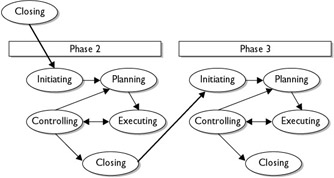
Figure 3-4: Closing processes can be completed within projects and within project phases.
Auditing Procurement Documents
The project manager has spent the money, but on what? The procurement audit process requires accountability for the monies that have been invested in the project. In some instances, the financial audit is more formal, and an accountant or a finance professional reviews the project's accounting. In other instances, the process is considered a debriefing and is completed with the project manager and management. In practically all instances, the intensity of the procurement audit is relevant to the autonomy of the project manager: the more power and responsibility the project manager has in an organization, the more accountable he is for the project budget.
Completing Scope Verification
Scope verification is a control process. However, at the end of the project the scope must be verified for final acceptance. This process is completed with the project manager and the key stakeholders. Scope verification is the process of inspecting, touring, and 'taking a walk-through' of the project deliverables to confirm that the requirements of the project have been met. Scope verification may happen at different intervals throughout the project, such as at key milestones or phase completions. Scope verification at the end of a project may require a formal sign-off from the customer that the project is complete and to their satisfaction.
Exam Watch
If the scope has been completed, the project is finished. Beware of exam questions that tell you the scope is completed but that the customer is not satisfied. Know first that if the scope is complete, the project is complete.
Closing Vendor Contracts
At the completion of a project or project phase the vendor contracts must be closed out. Confirmation that vendor invoices and purchase orders have been fulfilled, met, and paid is needed to complete the vendor closeout process. Closing out vendor contracts may also require proof or delivery of the goods or services purchased. The vendor contracts may be audited to confirm the vendor responsibilities have been met.
Closing Administrative Duties
When the project is completed, the project manager must finalize all reports, document the project experience, and provide evidence of customer acceptance. The project manager will create a final report reflecting the project success, or failure. The project manager will also provide information reflective of the project product and how it met the project requirements, and then will complete the lessons learned documentation.
Submitting Final Reports
Once the project documentation has been completed, the project manager will submit the final reports to the appropriate parties as outlined in the communications management plan. The final reports will include variance reports, status reports, cost and schedule accountability, and team member performance reviews, as required by the performing organization.
Archiving Project Records
The project records should be archived so that other project managers can use the information on their projects. In addition, the archives should serve as a wealth of historical information for later reference, future project managers, and reference for versioning, updates, or potential changes to the current project deliverables.
Reassigning the Project Team Members
At some point in the project, based on the organizational structure, team members will be reassigned to new projects. Reassigning project team members is of utmost importance in a projectized organization where project team members are with a project full-time through completion. As the project in a projectized organization nears completion, the project team may be anxious about their next assignment. In a functional matrix environment, the project team may fluctuate at phases or milestones as they complete their assignments and then move onto other activities within the organization.
Celebrating!
At project completion, a celebration to thank and reward the project team for their hard work and dedication to the project is needed. Celebrations are also a good time to reflect on the work completed, the challenges of the project, and to come back together as a team before moving onto other projects and opportunities within the organization.
Examining the Process Interactions
The activities within each of the five processes all lead to one thing: project completion. The activities within one process allow the project to move into another. As these five processes, initiation, planning, execution, control, and closure, are not a series of events, but rather an integrated process, the activities within one process may coincide with an activity within another. For example, a project manager may be working through the execution process to administer the contracts of a vendor while simultaneously working with the vendor through scope verification.
To elaborate, consider a vendor that is not performing the contracted work to the agreed level of quality. Contract administration falls within the executing processes, but QC falls within the controlling processes. The agreement and execution of the contract will govern the expected level of quality the vendor will be required to provide. Figure 3-5 shows that all of the processes are interrelated and contribute to the other processes.
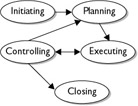
Figure 3-5: The processes within a project are interrelated.
How Process Groups Interact
Imagine any project: building a new house, creating a new service, deploying a technology solution. Within any of these projects there will be a logical approach from start to finish. Within project management, and in particular for your PMP exam, the flow of activities must be documented from initiation to closure. The five processes don't necessarily allow the work to progress-they serve more as a control mechanism to identify and oversee the flow of actions within the project.
Each process has unique activities, as we've seen already in this chapter, but each of these activities contributes and coincides with the project work. The activities guide the project work from concept to completion. Specifically, the parts of the processes are the gears to the 'project machine.' The processes allow for a specific, manageable, and expected outcome of the project. Within each process, there are three common components:
-
Inputs Documented conditions, values, and expectations that start the given process
-
Tools and techniques The actions to evaluate and act upon the inputs to create the outputs
-
Outputs The documented results of a process that may serve as an input to another process
Exam Watch
The output from a planning process is almost always some type of plan. Risk planning creates (outputs) the risk management plan. Plans, from the risk management plan to the communications plan, guide project actions. These are known collectively as subsidiary management plans.
These three components are fundamental through all five processes. Typically, plans, documented evidence of problems, or documented outcomes of activities, are inputs to a project process. For example, resource planning requires the WBS. The WBS is an input to resource planning, but also an output of the planning process group. The tools and techniques used to plan for resources include expert judgment, alternative identification, and your nifty project management software. The relationship between inputs, tools and techniques, and outputs is shown in the following illustration.

Recognizing the Process Types
Each of the five processes is tied to other processes in the realm of project management. Specifically, the outputs of one action within a process serve as inputs to the tools and techniques of another process.
Within the different process categories, there are two categories of process types:
-
Core processes These activities are required in practically every project. They follow a logical sequence to completion within the project. These core processes are also iterative in nature; they may be repeated until an acceptable solution is discovered.
-
Facilitating processes These activities are more flexible than the core processes, and their involvement in the project are not as stringent. Although these processes are flexible, they are not considered optional activities. You can think of the facilitating processes as supportive actions within a process, as shown in Figure 3-6.
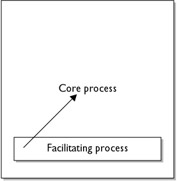
Figure 3-6: Facilitating processes support core processes.
The Initiating Process Group
The initiating process, as we've discussed, launches the five processes of a project. The key action to this process is authorizing. Initiating authorizes the project or the phase. Once initiation is complete, the project may move into the planning process.
The Planning Process Group
Projects fail at the beginning, not the end. Planning is the most important process within project management, because the work you are about to complete has likely never been done before. While planning is of utmost importance-and has the most processes-it does not mean the bulk of a project is planning. Planning is relative to the scope of the project and the usefulness of research completed. As you know, planning is an iterative process throughout the project lifecycle. The core processes, their purpose, and their relationship with other processes within the planning process are defined in Table 3-1.
| Core Process | Purpose | Precedes |
|---|---|---|
| Scope planning | To create a document that will guide project decisions. | Scope definition |
| Scope definition | To breakdown the project deliverables into manageable elements. The sum of the smaller elements equate to the project scope. | Activity definition |
| Activity definition | To define the required activities, and only the required activities, to complete the project scope. | Activity sequencing |
| Resource planning | To ascertain the required resources to achieve the defined activities to complete the project work. Resources include people, equipment, and materials. | Activity duration estimating |
| Activity sequencing | To determine the best sequence of planned activities within the project work. | Schedule development |
| Activity duration estimating | To determine the estimated required work units to successfully complete the defined activities. | Cost estimating |
| Cost estimating | To determine an estimated amount of monies to complete the project work using the defined facilities, services, and goods. | Cost budgeting |
| Risk management planning | To determine the risks within the project and how to react to the identified risks. | Schedule development |
| Schedule development | To determine the project schedule based on the sequence of activities, the required resources, and the required monies. The schedule development process reveals an estimated reflection of when all of the required work can be completed with the given resources. | Project plan development |
| Cost budgeting | To determine the estimated cost of the activities to complete the project work. | Project plan development |
| Project plan development | Creating a coherent compilation of the other planning processes to guide the project execution. | Executing processes |
While the core processes follow a stringent pattern of completion, the facilitating processes are used as needed in no particular order. The facilitating processes are, however, linked to the core processes. They do not typically follow a particular flow from start to finish. The facilitating processes within the planning process are defined in Table 3-2.
| Facilitating Process | Purpose | Precedes |
|---|---|---|
| Quality planning | To determine the quality assurance standards used by the organization. The quality assurance standards that are relevant to the project must be planned into the project. | |
| Communications planning | To determine who needs what, when they need it, and in what modality (paper, electronic, and so on) it may be needed. | |
| Organizational planning | To determine the project roles and responsibility. This also determines the reporting structure between the project manager, the project team, and management. | Staff acquisition |
| Staff acquisition | To acquire the needed people to complete the determined project work. | |
| Risk identification | To identify the risks, rewards, and penalties associated with the project. | Qualitative risk analysis |
| Qualitative risk analysis | To prioritize the impact of the risks on the project (typically in a high, medium, and low ranking). | Quantitative risk analysis |
| Quantitative risk analysis | To measure and consider the probability and associated impact of the risks on the project. | |
| Risk response planning | To avoid, eliminate, reduce, or create a planned reaction to the identified risks within the project. | |
| Procurement planning | To determine what goods and services must be procured and when the goods and services will need to be procured in the project life cycle. | Solicitation planning |
| Solicitation planning | To determine the possible vendors to provide the goods and services for the project. |
The Executing Processes Group
The project work must be planned for, and then the project plan must be acted upon, followed, and adjusted. The executing processes are the activities that get the project work done. Within the executing processes there are also core processes and facilitating processes. Actually, there is only one core process, as Table 3-3 illustrates.
| Core Process | Purpose | Precedes |
|---|---|---|
| Project plan execution | To complete the project according to plan. The project plan may also be adjusted based on the outcome of the facilitating processes. | Facilitating processes |
The facilitating processes support the core processes by allowing the project plan to be updated as needed. Table 3-4 shows the facilitating processes, their purpose, and what activities they precede.
| Core Process | Purpose | Precedes |
|---|---|---|
| Solicitation | To accept quotes, bids, proposals, and offers to complete the solicited work as defined through solicitation planning. | Source selection |
| Source selection | To determine which source (vendor) will fulfill the procured good or service. | Contract administration |
| Contract administration | To manage a fair and balanced relationship between the buyer and the seller. | |
| Quality assurance | To meet the organization's quality standards. QA is an ongoing process that measures the quality of the work results against the demands of the quality standards of the performing organization. | |
| Team development | To develop the competencies of the project team as a whole and the individual members on the project team. | |
| Information distribution | To follow the details of the communications management plan; specifically to disperse the required information to the correct parties according to their identified needs and modalities. |
The Controlling Processes Group
Project management control requires measurement. Controlling a project requires active measurement against set goals, objectives, and expected outcomes. Should the measurements fall short of expectations, the planning processes are revisited. Within planning, variances to time and cost are reacted to with additional staffing, tradeoffs between schedule and budget, and the addition of possible resources necessary to complete the project on time. In addition, controlling processes allow for preventive action to squelch foreseen variances, failure, and quality control issues. There are two core processes within the controlling processes, as seen in Table 3-5.
| Core Process | Purpose | Works with |
|---|---|---|
| Performance reporting | To determine variances, project performance, and forecasting of project outcome. | Integrated change control |
| Integrated change control | To manage change across all facets of the project. | Performance reporting |
The facilitating processes within the controlling processes contribute and support the core processes. The facilitating processes are listed in Table 3-6.
| Facilitating Process | Purpose | Precedes |
|---|---|---|
| Scope verification | To verify that phase and project deliverables are in alignment with customer expectations. Scope verification formalizes the acceptance. | Scope change control |
| Scope change control | To protect the project scope from change. | |
| Schedule control | To prevent unnecessary changes to the schedule, to control the flow of activities, and to forecast completion. | |
| Cost control | To prevent unnecessary changes to the project budget. | |
| Quality control | To conform to the required organizational quality standards and to remove or improve faulty, below quality, performance. | |
| Risk monitoring and control | To monitor and maintain risks, responses to risk, introduction of new and secondary risks. In addition, allows for control of currently identified risks and the planned responses to the identified risks. |
The Closing Processes Group
The closeout processes are typically associated with the project closure, but may also be applied to phase completion. Recall that the project phases are unique to each project, while the processes within project management exist within the project management life cycle. The core processes of the closing processes are shown in Table 3-7.
| Core Process | Purpose | Precedes |
|---|---|---|
| Contract closeout | To complete and finalize any procurement issues such as payment, inspection of procured services and goods, and any open project items. | Administrative closure |
| Administrative closure | To gather, evaluate, and disseminate the required information on the project or phase, its performance, quality, and completeness. Administrative closure also includes completing the lessons learned document and filing for future reference. |
Customizing Process Interactions
The processes discussed in the previous section are the mainstream, generally accepted order of operations. You can count on the core processes existing and progressing in the preceding order. However, having said that, you can also count on these processes to be flexible, pliable, and customized to work in any order the project demands. Project processes are not made of stone, but flexible steel.
Here are some general guidelines to know about customizing project processes:
-
Facilitating processes may be shifted in sequence to meet the demands of the project (such as the timing of the procurement processes).
-
All processes may not be needed on all projects, but the absence of a project doesn't mean it wasn't needed. The project manager and the project team should identify all of the processes required to make the project a successful one.
-
Projects that are resource dependent may define roles and responsibilities prior to scope creation. This is because the scope of the project may be limited by the availability of the resources to complete the scope.
-
The processes may be governed by a project constraint. Consider a predetermined deadline, budget, or project scope. The project constraint, such as a deadline, will determine the activity sequencing, the need for resources, risk management, and other processes.
-
Larger projects require more detail. Remember that projects fail at the beginning, not the end.
-
Subprojects and smaller projects have more flexibility with the processes based on the process usefulness. For example, a project with a relatively small team may not benefit from an in-depth communications plan the same as a large project with 35 project team members would.
Plotting the Processes
The first three chapters of this book have focused on the project management endeavor, the project management context, and the project management processes. Chapters 4 through 12 focus on the project management knowledge areas. In these chapters, we'll zoom in on the processes we've identified and breakdown the topics into exam specific information.
While the information we've covered in this chapter is important, it is more an umbrella of the nine knowledge areas you'll want to focus on for your PMP exam. Table 3-8 maps out the 39 project management processes to where they typically fall within the nine knowledge areas and which chapter in this book will cover the associated process.
| Initiating | Planning | Executing | Controlling | Closing | Chapter | |
|---|---|---|---|---|---|---|
| Project integration management | Developing the project plan. | Project plan execution | Integrated change control | 4 | ||
| Project scope management | Project initiation | Creating and defining the project scope. | Scope verification and change control | 5 | ||
| Project time management | Defining activities, their sequence and their estimated duration. Developing the project schedule. | Schedule control | 6 | |||
| Project cost management | Determining the required resources, their estimated costs, and completing cost budgeting. | Enforcing cost control. | 7 | |||
| Project quality management | Planning for quality. | Adhering to the performing organization's quality assurance requirements. | Enforcing quality control on the project. | 8 | ||
| Project human resource management | Completing organizational planning and staff acquisition. | Ensuring team development. | 9 | |||
| Project communications management | Creating the communications management plan. | Distributing the required information to the appropriate parties. | Reporting on project performance. | Completing administrative closure. | 10 | |
| Project risk management | Completing risk management planning, risk identification, qualitative and quantitative risk analysis, and risk responses. | Monitoring and controlling risk. | 11 | |||
| Project procurement management | Completing the procurement and solicitation planning. | Soliciting vendors to participate on the project. Completing source selection based on defined criterion, and then following-through with contract administration. | Completing the contract closeout. | 12 |
|
| < Day Day Up > |
|
EAN: 2147483647
Pages: 209